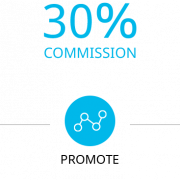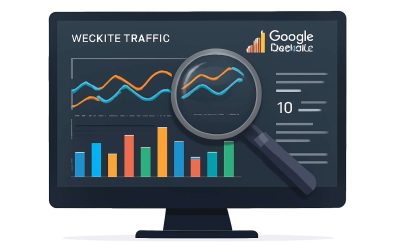Understanding Website Traffic Visitors
1.1 – Definition of Website Traffic Visitors
Website traffic visitors form the lifeblood of any online presence — without them, even the most compelling content remains unseen, a whisper lost in a digital void. Understanding who these visitors are is crucial to unlocking the secrets of your website’s true potential. But what exactly defines a website traffic visitor? Essentially, they are individuals who land on your site, engaging with your content, products, or services — whether by a single fleeting glance or through prolonged exploration.
This elusive group can be categorised in various ways, revealing patterns and behaviours that often go unnoticed. For instance, some visitors arrive via search engines, seeking specific solutions, while others stumble upon your site through social media or referral links. Recognising these nuances transforms raw numbers into a narrative, unlocking insights into how your website traffic visitors discover and interact with your digital domain.
In essence, every visitor holds a story — one that, when deciphered, can reveal the unseen currents driving your website’s success. Analyzing these interactions offers a window into the true nature of your online audience, guiding strategic decisions that resonate more deeply than ever before.
1.2 – Types of Visitors (New vs. Returning)
In the shadowed corridors of the digital realm, understanding the nature of your website traffic visitors is akin to deciphering ghostly whispers from the ether. Among these spectral entities, two distinct phantasms emerge: the new and the returning. Each carries a different tale—one seeking the unfamiliar, the other haunted by familiarity.
The new visitors are like wandering souls, drawn by a beacon of curiosity or necessity, eager to explore your domain for the first time. Meanwhile, returning visitors are the loyal apparitions, revisiting your digital haunt with a sense of purpose or nostalgia. Recognising these spectral patterns helps you unravel the true story behind your website traffic visitors, revealing what draws new visitors in and what keeps the returning ones coming back from the abyss.
- New visitors herald the initial encounter, often the result of a search or fleeting discovery.
- Returning visitors are the persistent spirits, returning perhaps for fresh content or renewed interest.
In this dance of shadows and light, knowing who walks through your virtual halls grants you the power to shape your online presence with a more profound understanding of these enigmatic visitors.
1.3 – Importance of Tracking Visitors
Understanding the behaviour of your website traffic visitors is a pursuit shrouded in mystery, yet vital for conjuring a thriving digital presence. Tracking these spectral entities reveals their clandestine motives — what draws them into your shadowed halls and what lures them to return. Without this knowledge, your efforts risk wandering aimlessly through the darkness, blind to the unseen forces at play.
By analysing the patterns of website traffic visitors, you gain insight into their journey — whether they are fleeting phantoms passing through or loyal spirits returning time and again. This understanding acts as a lantern in the gloom, illuminating the pathways that beckon new visitors or keep the returning ones enchanted. Harnessing this arcane knowledge empowers you to weave a more compelling web, one that captures the attention of these elusive digital wraiths.
1.4 – Common Metrics to Measure Visitors
Understanding the behaviour of your website traffic visitors requires more than just a glance at raw numbers—it’s about deciphering the subtle signals they leave behind. To truly grasp the essence of their journey, you must measure key metrics that shed light on their engagement and intent. These metrics act as the compass guiding you through the labyrinth of digital interactions, revealing what captivates or repels your visitors.
Among the most essential metrics are the number of sessions, bounce rate, average session duration, and pages per session. Each offers a unique perspective on how visitors interact with your site. For example, a high bounce rate might suggest that visitors aren’t finding what they seek, while longer session durations often indicate compelling content. To better understand the behaviour of your website traffic visitors, consider tracking these vital signs:

- Session count
- Bounce rate
- Average session duration
- Pages per session
These metrics serve as the hidden language of your digital realm, helping you interpret the intentions of your visitors and refine your approach to enchant them further. When you decode these signs, the once mysterious world of website traffic visitors begins to reveal its secrets, allowing your online presence to flourish with purpose and clarity.
Sources of Website Traffic
2.1 – Organic Search Traffic
Organic search traffic is often the largest source of website traffic visitors. It brings in visitors actively searching for what your site offers, making it highly valuable. When people type queries into search engines, your site can appear in the top results, drawing in relevant traffic without paid advertising.
This kind of traffic is sustainable because it relies on your website’s SEO strength. Optimising your content, keywords, and site structure increases your chances of ranking higher. As a result, you attract high-quality visitors who are genuinely interested in your offerings.
To maximise organic search traffic, focus on improving your search engine optimisation (SEO) strategies. This includes keyword research, creating valuable content, and earning backlinks. When done right, organic search traffic can steadily grow, turning casual visitors into loyal customers.
2.2 – Paid Search and Advertising
In the shadowy corridors of digital real estate, paid search and advertising cast a hauntingly powerful spell over website traffic visitors. Unlike the organic whispers of SEO, paid campaigns demand a direct toll—an investment that manifests as immediate visibility in the search engine’s darkened halls. This method is often swift, pulling in targeted visitors with precision, as long as the spell is sustained.
To harness this spectral force effectively, many opt for a mix of strategies. Consider this ordered list:
- Pay-per-click (PPC) advertising that targets specific keywords.
- Display ads that haunt relevant niche websites.
- Remarketing efforts that re-engage visitors who have already crossed your path.
While the allure of paid search can be intoxicating, it requires careful calibration. When wielded with a sharp eye on return on investment, paid advertising can significantly increase your website traffic visitors, transforming fleeting visitors into loyal spectres of your brand.
2.3 – Referral Traffic from Other Websites
Referral traffic from other websites acts like a whispering ghost, quietly guiding new visitors straight to your digital doorstep. These visitors arrive not through search engines, but via links from relevant, authoritative sources — a network of unseen pathways connecting the vast web. This route can be a treasure trove for boosting your website traffic visitors, especially when you forge strong alliances with niche blogs, industry portals, or influential online communities.
Understanding the sources of referral traffic can reveal which partnerships are most potent. Here are some common origins:

- Backlinks from high-authority sites that signal trustworthiness to search engines and visitors alike.
- Mentions and shares on social media platforms, which often serve as digital bridges to your content.
- Guest posting on reputable blogs, creating an avenue for targeted traffic visitors to discover your brand.
Yet, the real magic lies in cultivating these relationships, transforming fleeting visits into loyal followers. Referral traffic, when harnessed correctly, becomes a spectral force capable of awakening dormant website traffic visitors and expanding your digital footprint beyond organic and paid channels.
2.4 – Social Media Traffic
Social media platforms are a powerful driver of website traffic visitors. While they may not always bring the highest volume, the quality of traffic from social channels can be remarkably high. Engaging content shared across platforms like Facebook, Twitter, LinkedIn, and Instagram creates digital bridges, encouraging users to click through to your website. This traffic isn’t random; it’s targeted and often highly motivated.

Understanding how social media influences your website traffic visitors is crucial. For example, shared links from niche online communities or industry-specific groups tend to generate more relevant visitors. A strategic approach to social media can turn casual browsers into engaged followers. Efforts should focus on creating compelling posts and nurturing online relationships, transforming social media from a simple referral source into a consistent stream of valuable visitors.
- Content sharing and engagement
- Influencer collaborations
- Community participation
2.5 – Direct Visitors
Among the myriad sources of website traffic visitors, direct access holds a unique place — it’s the digital equivalent of a loyal patron walking straight into your storefront. When visitors type your URL directly into their browser or click on a bookmarked link, it signals a level of familiarity and intent that other channels often lack. This type of traffic epitomises brand recognition and trust, often translating into higher engagement and conversion rates.
Interestingly, direct visitors aren’t always purely loyal customers; some arrive through offline channels such as print advertisements, word of mouth, or even email campaigns that include direct links. To truly understand this traffic, it’s essential to recognise that it often acts as an anchor point—those who seek you out intentionally, motivated by a prior connection or interest.
Tracking and nurturing website traffic visitors from direct sources can be complex but rewarding. It’s a reflection of your brand’s staying power and the effectiveness of your overall digital ecosystem, demonstrating that sometimes, the most powerful visit is the one initiated by the user themselves. Consider this list of common origins for direct traffic:
- Typing your website URL directly into the browser
- Accessing bookmarked pages
- Offline marketing channels like print or TV ads with embedded URLs
- Email links included in newsletters or personal outreach
Analyzing and Increasing Website Traffic Visitors
3.1 – SEO Strategies for Higher Traffic
Understanding how to analyse and increase website traffic visitors is the cornerstone of any thriving online presence. While attracting visitors is essential, it’s equally crucial to optimise their experience to convert casual browsers into loyal customers. High traffic counts are impressive, but without strategic SEO tactics, they can remain superficial. Instead, focus on refining your SEO strategies for higher traffic, which involves more than just keyword stuffing; it’s about creating a seamless journey through your site.
Effective SEO strategies for higher traffic include a combination of on-page optimisation, quality content, and technical enhancements. Incorporating relevant keywords naturally within your content ensures your site ranks better in search engine results pages. Additionally, leveraging long-tail keywords can attract highly targeted visitors. Remember, boosting website traffic visitors isn’t just about volume—it’s about attracting the right audience that resonates with your brand.
To truly capitalise on your efforts, consider implementing a layered approach with tools like keyword research, backlink building, and user experience optimisation. This holistic method can dramatically elevate your organic search traffic and bring in visitors who are genuinely engaged with your content. After all, increasing website traffic visitors is an ongoing process—one that rewards patience, precision, and persistent refinement.
3.2 – Content Marketing and Blogging
Understanding the behaviour of your website traffic visitors is the cornerstone of crafting compelling content marketing strategies. Engaging blog posts serve as magnets for inbound traffic, guiding visitors through a narrative that resonates with their needs and interests. When you produce consistently valuable and relevant content, you naturally attract targeted visitors who are more likely to convert into loyal followers or customers.
To amplify your site’s reach, consider deploying a layered approach that includes keyword-rich articles, guest blogging, and social sharing. Incorporating long-tail keywords within your blog titles and body not only boosts your visibility in search engine results but also draws in visitors seeking specific solutions. Remember, the goal isn’t just to increase numbers but to draw the right website traffic visitors—those who genuinely find value in your content.
By analysing which blog topics generate the highest engagement, you can refine your content marketing approach—fostering a virtuous cycle of attracting and retaining website traffic visitors. A strategic focus on quality content, combined with optimisation techniques, ensures that your website remains a vibrant hub for both new and returning visitors eager to explore what you offer.
3.3 – Leveraging Social Media Platforms
In the chaotic world of digital footprints, leveraging social media platforms can be the secret sauce to dramatically increase your website traffic visitors. While organic search and paid ads often hog the spotlight, social media acts as the vibrant street market where your content can shine brightly amidst the noise. Sharing engaging snippets, eye-catching visuals, or witty remarks can turn casual scrollers into loyal visitors eager to explore your site further.
To maximise your impact, consider a layered approach that involves strategic posting times, targeted audience engagement, and personalised content. A well-crafted social media campaign can serve as a magnet for website traffic visitors, especially when paired with compelling calls to action. Remember, social media isn’t just about likes and shares; it’s about building a community of visitors who see your website as a valuable resource in their digital journey.
- Identify the right platforms where your target audience hangs out
- Create shareable content that resonates with their interests
- Engage consistently and authentically to build trust
- Use analytics to track which posts generate the most website traffic visitors
By analysing these interactions, you gain invaluable insights into what truly motivates visitors to click through. This real-time feedback loop allows you to refine your social media strategies, transforming fleeting engagement into a steady stream of website traffic visitors who are genuinely interested in what you offer—and not just there for the memes.
3.4 – Pay-Per-Click (PPC) Campaigns
Pay-Per-Click (PPC) campaigns are a potent catalyst in the quest to amplify website traffic visitors. Unlike organic methods, PPC offers a swift, targeted approach that places your site directly in front of eager audiences actively searching for what you provide. With a well-crafted ad, you can seize prime digital real estate on search engines and social platforms, drawing in highly motivated visitors.
By carefully selecting keywords and setting precise bids, you ensure your ads reach the right eyes at the right moment. Monitoring the performance of your PPC campaigns is vital; tools that track click-through rates and conversion metrics reveal which ads are most effective at transforming impressions into engaged visitors. Remember, the ultimate goal isn’t just clicks but attracting genuine interest that converts into loyal website traffic visitors.
To structure your campaigns effectively, consider employing a strategic list:
- Identify high-intent keywords aligned with your niche
- Design compelling ad copy with strong calls to action
- Segment audiences based on behaviour and preferences
- Test different ad formats and landing pages for optimisation
When executed with precision, PPC campaigns can transform fleeting impressions into a steady stream of dedicated website traffic visitors, enriching your digital ecosystem with valuable engagement and growth.
3.5 – User Experience and Website Optimization
Understanding and improving your website traffic visitors is critical for sustained growth. User experience plays a pivotal role; a seamless, intuitive website encourages visitors to stay longer and explore more. Fast loading times, easy navigation, and mobile responsiveness are non-negotiable elements that keep visitors engaged.
Website optimisation extends beyond aesthetics. Optimised content, clear calls to action, and logical site structure help search engines understand your site better, driving more targeted website traffic visitors. Regular analysis of visitor behaviour reveals patterns and bottlenecks, allowing adjustments that can significantly boost traffic.
- Analyse bounce rates to identify areas where visitors lose interest.
- Use heatmaps to see which parts of your site attract the most attention.
- Refine your site based on real user feedback and data.
Remember, the goal isn’t just to attract visitors but to convert them into loyal customers. Enhancing user experience and website optimisation creates a smoother journey, turning casual browsers into committed website traffic visitors.
Tools and Techniques for Monitoring Visitors
4.1 – Google Analytics Overview
Monitoring website traffic visitors is an art form that requires precision and a keen eye for detail. Google Analytics, often regarded as the gold standard, offers an expansive overview of visitor behaviour, revealing insights that can transform your digital strategy. Its intuitive interface simplifies the daunting task of sifting through vast data, making it accessible to both novices and seasoned marketers alike.
With Google Analytics, you can track key metrics such as bounce rate, session duration, and conversion paths—each revealing a different facet of your audience’s journey. By examining these patterns, you can identify where your website traffic visitors are coming from and how they interact with your content.
To make sense of this wealth of data, consider leveraging specific tools and techniques, such as custom dashboards or segmentation. These allow for a more nuanced understanding of visitor behaviour, helping you tailor your approach to attract even more website traffic visitors. Ultimately, the goal is to turn raw data into actionable insights—each metric a brushstroke in painting your perfect digital masterpiece.
4.2 – Heatmaps and User Behavior Tools
When deciphering the behaviour of your website traffic visitors, the right tools can reveal hidden patterns lurking beneath the surface. Heatmaps, for instance, act like a digital x-ray, exposing exactly where visitors’ attention lingers and which elements they ignore. These visual cues help identify hot zones on your site—crucial insights when aiming to optimise user engagement.
User behaviour tools go beyond simple metrics, offering behavioural analytics that track mouse movements, scroll depth, and click patterns. By integrating these tools, you gain a clearer picture of how visitors interact with your content, enabling you to create a more intuitive user experience.
- Implement heatmap software like Hotjar or Crazy Egg.
- Analyse session recordings to observe real-time visitor journeys.
- Utilise click-tracking to pinpoint high-impact content areas.
This layered approach transforms raw data into a compelling narrative—one where every move of your website traffic visitors is a clue, guiding you to optimise your site’s design and content for maximum impact. Harnessing these techniques ensures that each visitor’s journey is not just tracked, but understood on a visceral level, elevating your digital strategy to a new realm of precision.
4.3 – Conversion Tracking
Understanding what motivates your website traffic visitors is only half the battle; knowing whether they convert is where true mastery lies. Conversion tracking transforms raw visitor data into a strategic asset, revealing which interactions translate into tangible results—be it a sale, a sign-up, or a share. This process involves monitoring specific actions visitors take, allowing you to see exactly which pages or elements drive engagement and which are mere digital dead zones.
Tools like Google Tag Manager and specialised analytics software can help set up custom conversion goals effortlessly. For instance, you might track how many visitors add items to their cart or complete a contact form. By analysing this data, you can identify bottlenecks or friction points, enabling you to fine-tune your site’s user journey. Ultimately, conversion tracking turns the elusive puzzle of website traffic visitors into a clear, actionable roadmap—because understanding what works is the secret sauce in digital marketing.
4.4 – A/B Testing for Traffic Optimization
Understanding the behaviour of website traffic visitors requires more than just tracking numbers; it demands sophisticated tools and clever techniques to decode their journey. A/B testing stands out as a potent method to optimise this traffic, allowing you to compare different versions of your webpage and pinpoint what truly resonates. With carefully crafted variations, you can observe how subtle design tweaks influence visitor engagement and conversion rates.
To enhance your monitoring capabilities, utilise tools like Google Optimize and Optimizely, which make setting up and analysing A/B tests a seamless experience. These platforms enable you to experiment with headlines, call-to-action buttons, or page layouts without disrupting your live site. By systematically analysing the results, you reveal the secret patterns behind website traffic visitors’ preferences and behaviours.
- Identify the key elements on your page that impact user interaction.
- Design variations that test different approaches for these elements.
- Monitor how visitors respond to each version, focusing on engagement and conversion metrics.
Such rigorous testing transforms guesswork into data-driven decisions, unlocking new avenues for increasing your website’s effectiveness. After all, the art of optimising website traffic visitors lies in understanding their subtle reactions and adapting swiftly to their evolving expectations. The real mastery reveals itself through persistent experimentation and keen observation—tools that turn your digital landscape into a finely tuned machine.
Common Challenges and Solutions
5.1 – Dealing with Bounce Rate
In the delicate dance of capturing website traffic visitors, one shadow looms large—bounce rate. This elusive metric often whispers tales of lost opportunity, where visitors arrive with curiosity but depart before exploring the depths of your site. High bounce rates can be a siren song signalling misaligned expectations or technical shortcomings.
Addressing this challenge requires a nuanced approach. Ensuring quick load times, engaging content, and intuitive navigation can act as anchors, compelling visitors to linger. Sometimes, a simple list of core issues can illuminate the path forward:
- Irrelevant landing pages that fail to meet visitor intent
- Slow website performance causing impatience
- Poor mobile optimisation making access cumbersome
<li-Lack of clear calls-to-action that guide user journey
By weaving these elements into your website’s fabric, you craft an environment where website traffic visitors are encouraged to stay, explore, and convert. The art lies in understanding that every bounce is a story waiting to be rewritten—an opportunity to transform fleeting interest into lasting engagement.
5.2 – Addressing Low Traffic Volumes
Low website traffic visitors can be a persistent challenge, often signalling underlying issues that need immediate attention. One common hurdle is insufficient visibility in search engines, which limits organic search traffic and keeps potential visitors at bay. Additionally, poorly targeted marketing campaigns may not reach the right audience, resulting in low referral traffic from other websites or social media platforms.
Addressing these obstacles involves a strategic focus on content relevance and outreach. For example, ensuring your content aligns with what your target audience seeks can significantly boost engagement. Furthermore, optimising website performance for faster load times can help retain visitors once they arrive.
To increase website traffic visitors effectively, consider a step-by-step approach:
- Refine keyword strategies to match user intent.
- Enhance content quality to attract backlinks and shares.
- Leverage social media channels for broader exposure.
By tackling these core issues, you can unlock the full potential of your website and see a tangible rise in website traffic visitors.
5.3 – Analyzing Traffic Quality
Understanding the quality of your website traffic visitors is as vital as recognising their quantity. High traffic numbers can mask underlying issues—are those visitors genuinely engaged, or are they just passing through? Analyzing traffic quality reveals whether your efforts attract the right audience or merely inflate visitor counts without conversion. This insight allows you to refine your SEO strategy, ensuring that your website traffic visitors are more likely to become loyal customers.
One common challenge lies in discerning behaviour patterns. Are visitors bouncing quickly or spending meaningful time exploring your content? Tools like heatmaps and user behaviour analytics can uncover these nuances, providing a window into the true value of your traffic. To optimise engagement, consider focusing on:
- Assessing bounce rates to identify disengaged visitors
- Tracking conversion pathways to see how visitors navigate your site
- Segmenting traffic sources for deeper insights into quality
By evaluating these parameters, you gain a clearer picture of your website traffic visitors, transforming raw data into actionable intelligence that elevates your digital presence to new heights.
5.4 – Handling Fake or Bot Traffic
Fake or bot traffic can be the uninvited guest at your online party—annoying, disruptive, and downright deceptive. These digital interlopers often masquerade as real visitors, skewing your website traffic visitors count and diluting the authenticity of your analytics. The challenge? Spotting these phantoms before they sabotage your SEO efforts and waste your marketing budget.
Fortunately, solutions exist that can help you tame this virtual trickery. Implementing robust filtering tools and analysing traffic patterns are your first line of defence. Look out for suspicious spikes in website traffic visitors, especially from unusual IP addresses or geographic locations that don’t match your target audience. Employing advanced bot detection services can automatically identify and block automated traffic, ensuring your data remains credible.
To keep your website traffic visitors genuine, consider segmenting traffic sources so you can easily flag anomalies. Regularly updating your security protocols and leveraging analytics tools—such as Google Analytics—help you maintain a clear picture of authentic visitors. After all, the real treasure lies in understanding the behaviour of bona fide users, not the digital phantoms lurking in your analytics!



0 Comments